bokeh
Latest
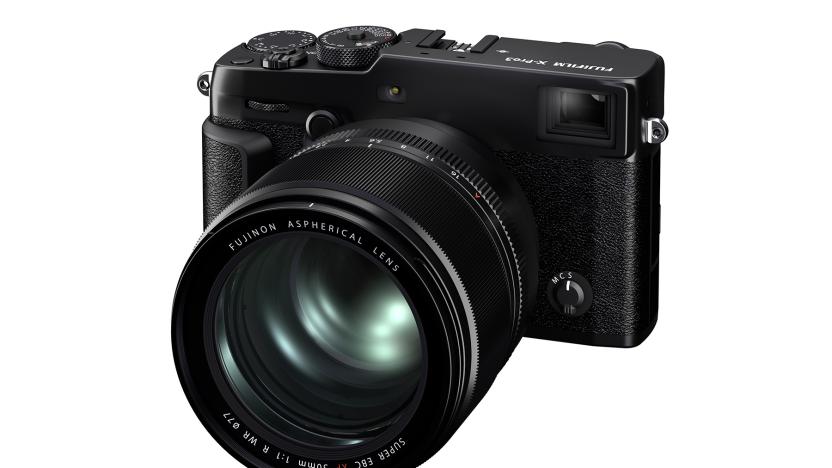
Fujifilm's insanely fast f/1.0 lens is the first with autofocus
Fujifilm has unveiled the world’s fastest autofocus lens, the XF50mmf1.0 R WR designed for its APS-C sensor X-series mirrorless cameras.
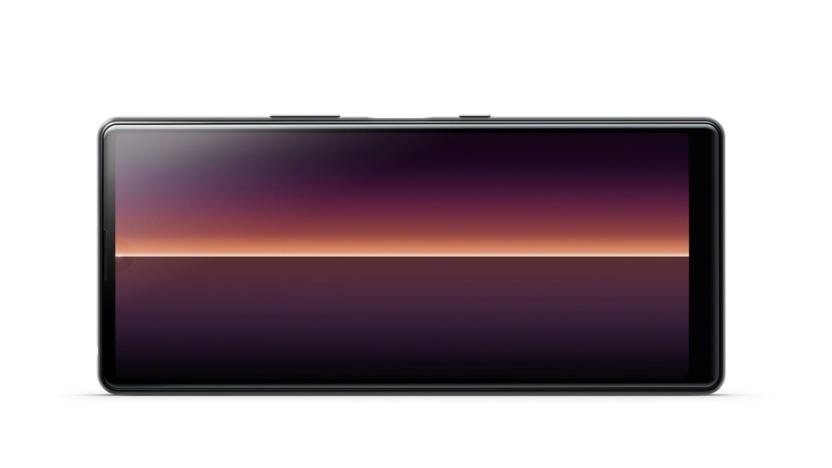
Sony’s Xperia L4 is an entry-level phone with a 21:9 display
Sony's added a sleek new smartphone to its entry series -- the Xperia L4. Designed as an "entertainment device," the phone's USP is undoubtedly its proportions and 6.2 inch 21:9 wide display -- good for watching movies, playing games and, presumably, seeing more while scrolling less. Plus, Sony's multi-window feature means you can launch and use two apps side-by-side.
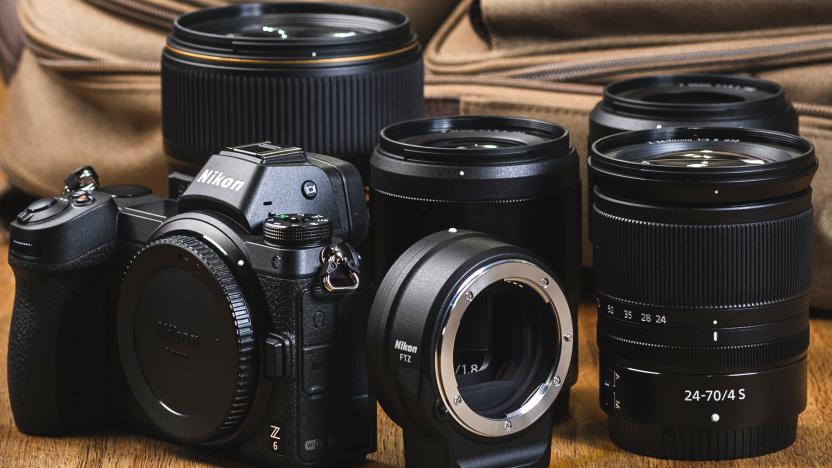
How to pick a lens for your mirrorless camera in 2019
When buying a mirrorless camera, there's an equally crucial side question: What lenses do I need for this thing? The glass you place in front of that sensor plays a key role in how your photos or videos look and what kind of shooting you can do. It's a complex decision too. You need to consider factors like sharpness, distortion, speed, prime or zoom and, most important, price. In this guide, I'll touch on all that and look at some of the best lenses for Sony, Canon, Nikon, Fujifilm and Micro Four Thirds mirrorless cameras.
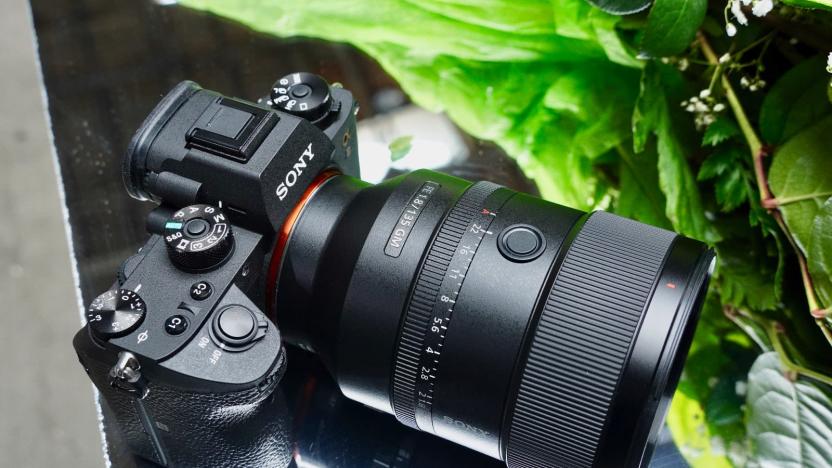
Sony's 135mm f/1.8 G Master full-frame lens is all about bokeh
Last year at Photokina 2018, Sony said it had big plans to keep growing its E-mount lens portfolio. The company revealed back then it was working on 12 new lenses for its Alpha mirrorless cameras, which would increase the number of native glass for those shooters from 48 to 60. And Sony is staying true to its word: It has announced the FE 135mm f/1.8 GM lens, the latest addition to its G Master lineup for full-frame mirrorless cameras. This telephoto prime is intended to be a beast for shooting portraits, offering a fast, accurate and quiet autofocus, as well as shallow depth of field for intense bokeh effect. Sony says that the FE 135mm f/1.8 GM's control and ergonomics are designed for both still photography and movie shooting, and it promises "superior performance plus mobility and reliability" compared to any other 135mm full-frame lens on the market. If you're interested, Sony's FE 135mm f/1.8 GM is set to arrive in April for $1,900. Until then, see below for some sample images taken with the lens mounted on an A9 full-frame mirrorless, which turned out to be super sharp and bokeh-laden. To view our sample images in full resolution, click here.
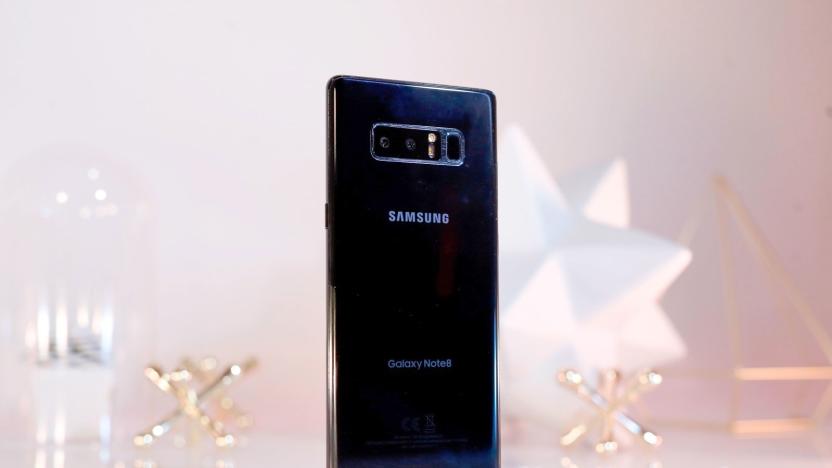
Samsung's dual camera 'bokeh' tricks are coming to budget phones
Dual-camera smartphones with improved low-light photos and fancy, defocused "bokeh" behind subjects are pretty new and until now, have been reserved for high-end smartphones. Showing how fast things can move nowadays, however, Samung has revealed a new "Isocell dual" camera module for lower-priced mobile phones. With built-in software and algorithms, they specifically allow two features: shooting in dim light, and blurring backgrounds to create "bokeh" after you've taken a photo.

Qualcomm's new fingerprint sensors work underwater
Hot on the heels of Apple's plans to reinvent its iPhone's fingerprint reader, Qualcomm looks set to position itself at the forefront of the fingerprint sensor market. It claims that it will be one of the first, if not the first, companies to produce under-display sensors. Unveiling its plans at Mobile World Congress Shanghai, the company revealed that its next-gen fingerprint sensors will use ultrasonic technology that can be fitted under displays, glass and metal, and can scan through OLED displays up to 1200um -- something we got to see in action for ourselves at Vivo's booth.

The ZTE Blade V8 Pro is yet another affordable dual-camera phone
First the Honor 6x, then the ASUS ZenFone 3 Zoom and now the ZTE Blade V8 Pro. The phones being unveiled here at CES 2017 all sport dual cameras that let you take photos with a shallow depth-of-field effect similar to what you can do with the iPhone 7 Plus. The difference is this week's new devices generally cost much less than the iPhone (although we don't know the ZenFone's price), with the cheapest being the just-announced Blade V8 Pro. For $230, the handset offers a respectable set of features, including two 13-megapixel rear cameras, a 5.5-inch full-HD display and an octa-core Snapdragon processor. From my brief experience with a preview unit, the V8 Pro feels sturdier than the Honor 6x ($250) and has a slightly better dual-camera implementation, to boot.

It takes two: A visual history of dual-camera mobile phones
With the recent launches of the iPhone 7 Plus and the LG V20, the dual-lens smartphone camera is once again a hot topic. Of course, many other companies will want to remind you that they were there first, except some have long since given up on the technology. So what happened? And why isn't this yet a standard feature on all flagship smartphones? For those intrigued, it's worth taking a trip seven years back in time.

Flare 2 is a solid photo effects editor for your Mac
Flare 2 for Mac (currently on sale for US$9.99 regularly $14.99) is a well thought out and executed app for photographers who want to get beyond the basics in photo effects. The app comes with dozens of filters, and each can be adjusted by the user, making the options almost infinite. In addition to things like the usual color washes, there are textures, borders, frames, tilt-shift, Bokeh rings (out of focus points of light), vintage film effects and more. RAW formats are supported, along with niceties like unlimited undo and batch processing. Photos can be exported as JPG, PNG and TIF. There's a complete online user guide which is detailed. Using the app is simple. Import your image, select a filter, then modify to taste. Previews are real time, and the layout of the app encourages experimentation. The effects are artistic, and I never wound up with anything horrible looking. The developers know their way around image editing, so you don't get cartoonish photos at the end. As a bonus, Flare 2 offers a free, universal iOS photos extension called Flare Effects, which adds Flare's filters as editing options to Apple's Photos and Camera app. That is to say, after installing and setting up Flare Effects for iOS (it walks you through the dead-simple instructions) you can use the filters and effects that that Flare offers from within the two apps from Apple. Note that I'm not calling Flare Effects for iOS an app, because it's an extension. Don't think of it as an image editor like many others. Instead, it adds Flare's great filters to two apps you're probably already using: Camera and Photos. It sounds confusing, but once you launch the app and follow the setup instructions, it's not. Flare 2 for the Mac requires Yosemite. It's a well done photo editing app that offers some things the 'big boys' like Photoshop don't have.

Google's new camera app brings Photo Sphere and Lens Blur to Android devices
While Google has continued to toss new features into the camera app shipped on its Nexus devices, many Android phones replace it with something else. But just as we revealed a few weeks ago, now it's available in the Play Store, ready to run on any phone or tablet using Android 4.4 KitKat. Beyond bits like Photo Sphere that we've seen before, Google is filling in the blanks on its new "Lens Blur" option. Meant to emphasize the subject while blurring the background for an impressive depth of field effect, it uses algorithms to simulate the large camera lens and aperture your phone or tablet doesn't actually have. Taking the photo requires an upward sweep to capture multiple images, used to estimate the depth of objects for a 3D map that lets the software re-render the photo later and blur specific items based on where it thinks they are. Google's Research Blog has more details on how it's all done, including the Lytro-like ability to change which object is in focus after you take the shot.

Lomography's Petzval lens ships to Kickstarter backers, pre-order it now for $599
If you ordered one of Lomography's Petzval lenses on Kickstarter for as little as $300, you'd be forgiven for feeling a bit smug right now. First off, you may get it soon since the first 500 have now shipped, and secondly, it's put the brassy glass up for pre-order to new buyers for a considerably higher price of $599. The starter package does include extras on top of the lens and cap, though: a Petzval Art Lens book, seven standard aperture plates, four experimental plates and a leather pouch. If you've got a Canon EF or Nikon F camera, that'll let you take artsy shots with whirly bokeh and vignetting like the 1840 original, but with the sharpness of modern optics. Lomography said that pre-orders won't ship until May due to limited Russian production and a backlog of Kickstarter orders. If that and the new price don't dissuade you, however, you can grab one here.

Tadaa SLR lets you select your focus after you take your picture
Tadaa SLR is a free app that lets you create depth-of-field effects after you take your photo. Open an image on your iPhone, then mask off the area where you want to preserve your focus. This opens the door for bokeh effects, which traditionally are often done with special lenses. Using the app is easy. Open a photo and use your finger to define a mask. Thanks to edge detection, you don't have to be exact. Anything you mask will remain in focus, while anything outside the mask will blur. The next step gives you the ability to adjust the out-of-focus parts, crop the image and adjust things such as saturation and contrast. Filters can adjust the colors and render attractive black-and-white images. Tadaa SLR adds a few tricks you might not get from other apps in your collection. For free, it's worth downloading and learning, because if used well, it can enhance anything from landscapes to tabletop photography to portraits. The app also gives you access to your camera if you want to use the app while shooting "live." Tadaa SLR does a pretty good job of mimicking depth-of-field adjustments in an SLR camera, so give it a try and see if it works for you. Like any effect, selective focus and blurring can be overdone. Tadaa SLR is not a universal app, so it's best suited to the iPhone or iPod touch. It requires iOS 6 or greater. Tadaa also produces a nice pseudo-3D app I reviewed earlier this year.

Lomography reinvents Petzval lens for analog and digital SLRs
When it was invented in 1840, the Petzval lens revolutionized photography thanks to its f/3.6 aperture. It's legendary for producing images with super sharp centers and unique backgrounds with a whirly bokeh -- as such it's particularly well suited for shooting portraits. Most Petzval lenses today are defective because of age and not optimized for modern cameras, so Lomography set out to reinvent the lens for the 21st century. The company just launched a Kickstarter campaign to bring the Petzval lens back for $300 -- it's teaming up with Zenit to manufacture high-quality lenses for analog and digital SLRs with Nikon F and Canon EF mounts. Lomography's Petzval lens is made of brass, features a gear rack focusing mechanism and comes with a Waterhouse aperture set (f/2.2, f/4, f/5.6, f/8, f/11 and f/16). Are you as intrigued as we are? Follow the source link below for the full campaign details.

Lensbaby lets your imagination run wild on a budget with the Spark, an $80 selective-focus lens
Lensbaby, maker of creative optics that let you take pictures you'd otherwise have to make in Photoshop is going after youthful crowd with its newest product, the Spark. The selective focus lens attaches to your Canon or Nikon DSLR, allowing you to create bokeh-rich images -- simply squeeze the unit to focus and tilt it on its axis to move the "sweet spot" as you go. The 50mm lens features a fixed f/5.6 aperture and focuses from 13-inches to infinity, and goes on sale from today from the company's website, Amazon and specialist retailers who deal in such things.

Lytro video camera 'a possibility', would need more processing muscle
While we impatiently await a Lytro to call our own -- or at least rigorously review -- it looks like the light field technology could be used for video. Ren Ng, CEO of Lytro and the man behind the camera's focus-dodging optical wizardry, mentioned that the main barrier between the curious camera lens and video recording is the amount of processing power required to manipulate all that fully-lit input. He also mentioned that Lytro is continuing to develop the wireless connectivity within the device, something that wasn't fully baked during our hands-on. If it's a processing power issue, those incoming quad-core smartphones might be able to help squeeze some video out of that f/2.0 lens...

Engadget Primed: What is aperture, and how does it affect my photos?
Primed goes in-depth on the technobabble you hear on Engadget every day -- we dig deep into each topic's history and how it benefits our lives. You can follow the series here. Looking to suggest a piece of technology for us to break down? Drop us a line at primed *at* engadget *dawt* com. Last week I wrote a piece for Engadget Primed on image sensors -- arguably the most critical component of any digital camera, having a direct influence on the quality of each and every photo. In a completely different way, another component that controls and changes the look of your photographs is the aperture. To create amazing photos with impact takes much more than the will to capture them -- sadly we can't all be like Ashton Kutcher, snapping away at well-lit parties overrun with models. It's a multifaceted process; to have the desire to work for a shot, to make the effort to put yourself into position, and to know how to utilize the equipment you have in the best way possible. None of these skills are easy to master, yet just like a painter who knows how to use their brush, mastering the photographic tool that is your camera yields more opportunities to plaster that Google+ page with shots you're proud of. In this Primed installment, we'll define the mechanism, explain the concepts and share ways to better convey messages in our two-dimensional stills -- just by adjusting the aperture. Ready to dive in? It's all after the break.

Lytro's light field camera hits the FCC, drop-dead simple user manual in tow
2011's most outrageously incredible camera just hit the FCC, leaving it a step or two shy of being on retail shelves here in America. The Lytro light field camera (hands-on) -- for those who blinked through late October -- is a rare game-changing device that enables photographers to shift the depth of field after the image has been captured. The downside, of course, is that this functionality is tucked into a pocket-sized toy rather than Canon's incoming EOS 1D-X (or similar), but we're hoping that it's only a matter of time before the company licenses this out to the big boys. The included user guide proves just how simple the $399 device will be to operate, but on the same token, how few options there will be for advanced users. Dig in yourself in the source link below -- looks like that "early 2012" shipping promise might just be kept.

Lytro camera hands-on (video)
You knew Lytro was up to something, but with its infinite focus light-field powered camera out of the bag, how does it actually stack up in real life? In a word: novel -- you certainly won't be tossing your regular camera for this shooter, at least not in its current incarnation. Still the concept of shoot now, ask focus questions later is revolutionary, so hop on past the break for our initial impressions. %Gallery-137034%

Lytro introduces world's first light field camera: f/2 lens, $399, ships early 2012
Ready for the world's first consumer light field camera -- you know, the spiffy kind that can infinitely focus? After demoing the tech earlier this year, Lytro's unveiled the world's first shipping product -- a little something it calls the Lytro camera. Within the anodized aluminum frame, the consumer-friendly camera totes an f/2, 8x zoom lens which utilizes an 11-mega-ray light-field to power all that infinite focus magic. It's instant-on and the rubber back-end wields only two physical buttons: one for shutter and the other for power. The company's added the ability to change the focus on-camera, a task accomplished via its touchscreen glass display. It'll ship in two versions: the $399 8GB flavor can hold 350 pictures, and comes in graphite or blue, followed by a $499 16GB model, which sports an electric-red finish and stores up to 750 images. Pre-orders go live at Lytro's website today, and will ship in early 2012 on a first-come first-serve basis. Our hands-on impressions are here, with PR and sample images after the break.%Gallery-137041%%Gallery-137039%%Gallery-137017%

Sony finally lets you use SD memory on Handycams, freshens up pro shooters with SSDs
Sony has just announced yet another mad plethora of Handycams, this time spreading its back-illuminated Exmor R sensor throughout the whole range. With it comes the ability to expand storage via Memory Stick, SD or SDHC cards, much improved "quick AF" functionality, as well as a six-blade aperture producing a more appealing "bokeh" -- quite an advanced consideration when talking about humble consumer recorders. The flagship XR550V (250GB HDD) and CX550V (64GB SSD) models also feature a wide-angle G lens, 12 megapixel stills, assignable manual control dial, and dedicated mic and headphone inputs. On the professional front, the company is offering the AX2000 and HXR-NX5U, with both recording AVCHD at rates up to 24MBps and producing 1080p footage. A 20x optical zoom is also nice, but for the $3,500 price of the cheaper AX2000, we'd expect nothing less. Check out the source links below for further details, including full pricing and availability.











